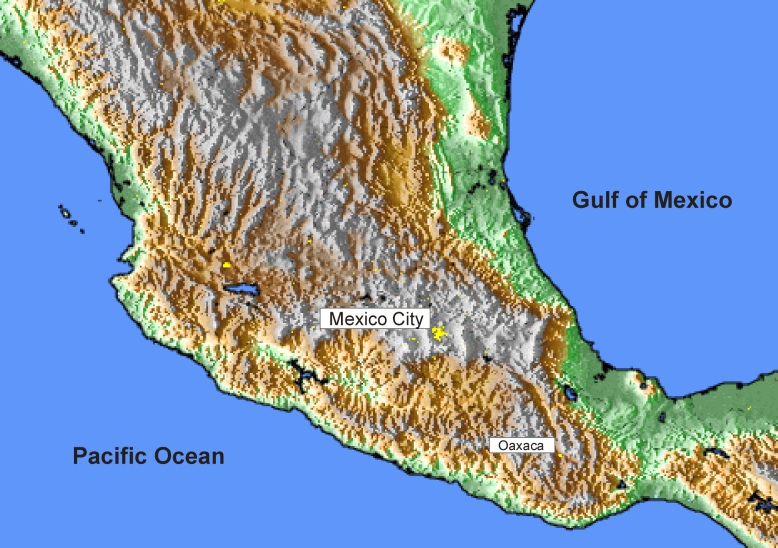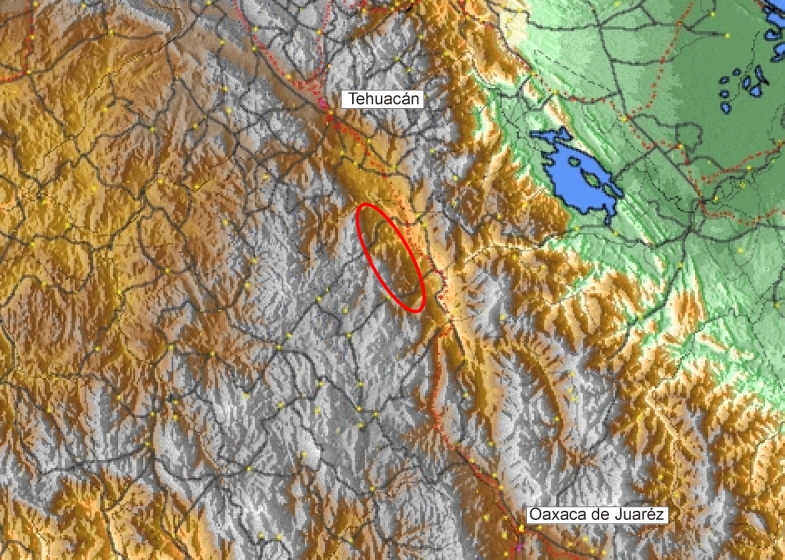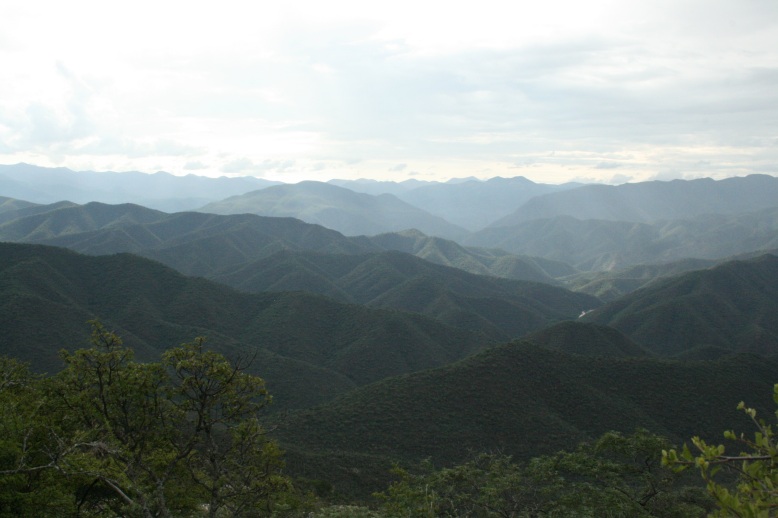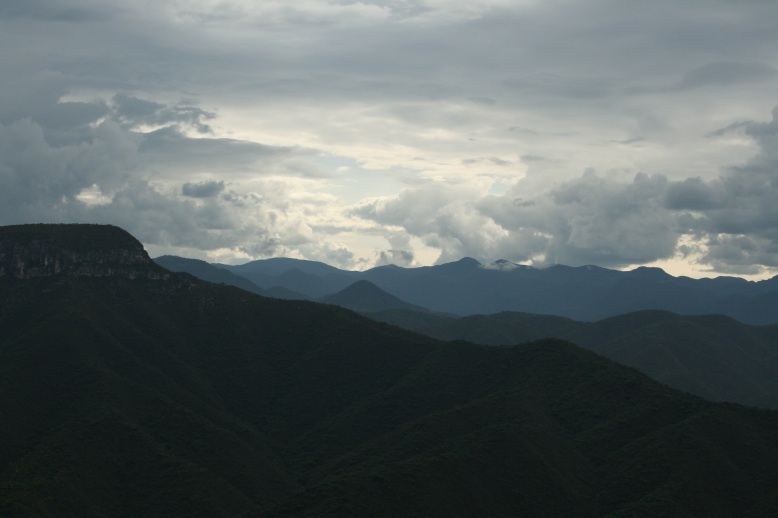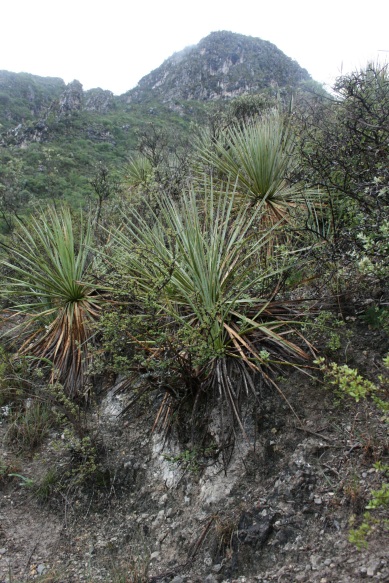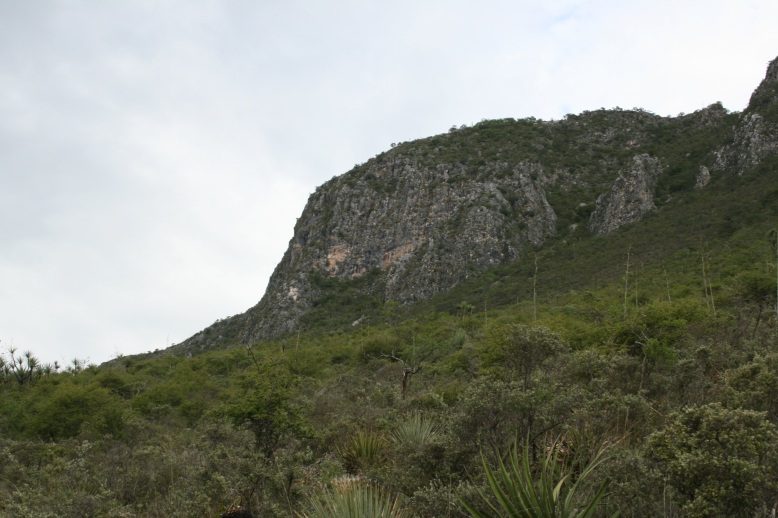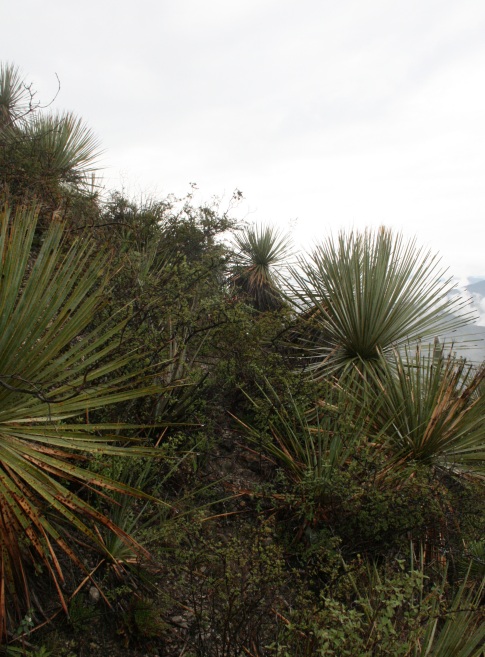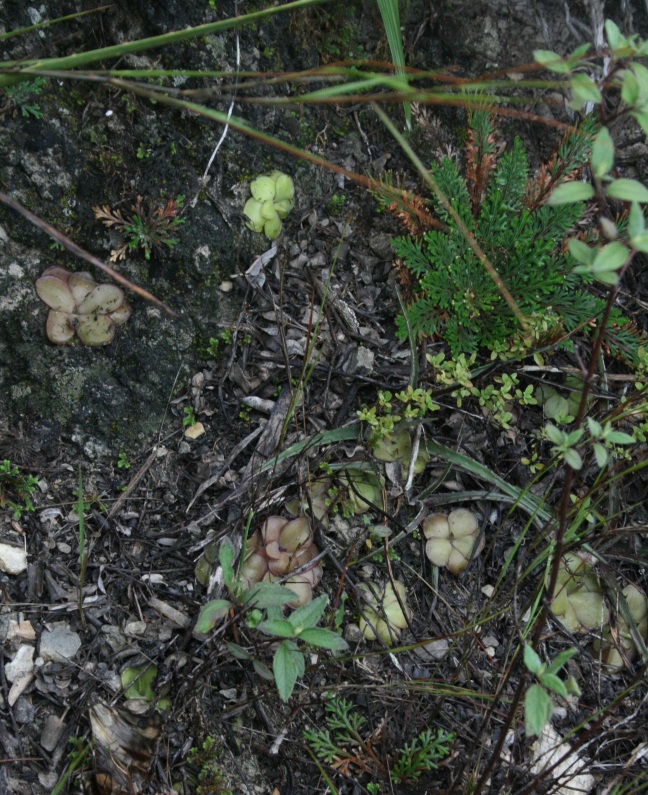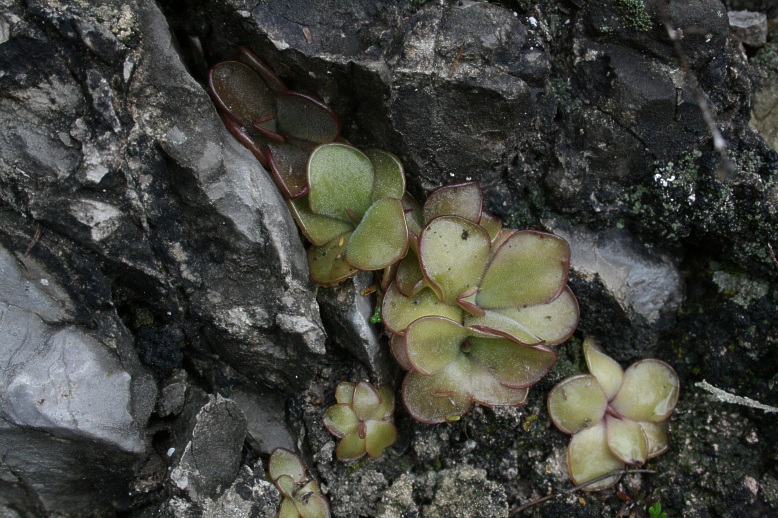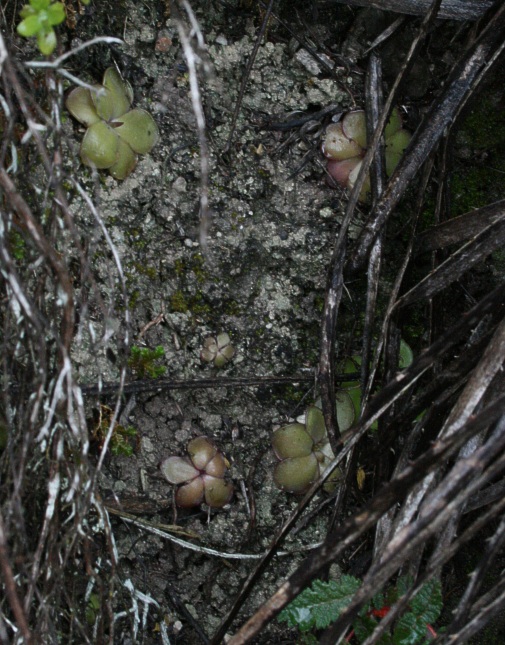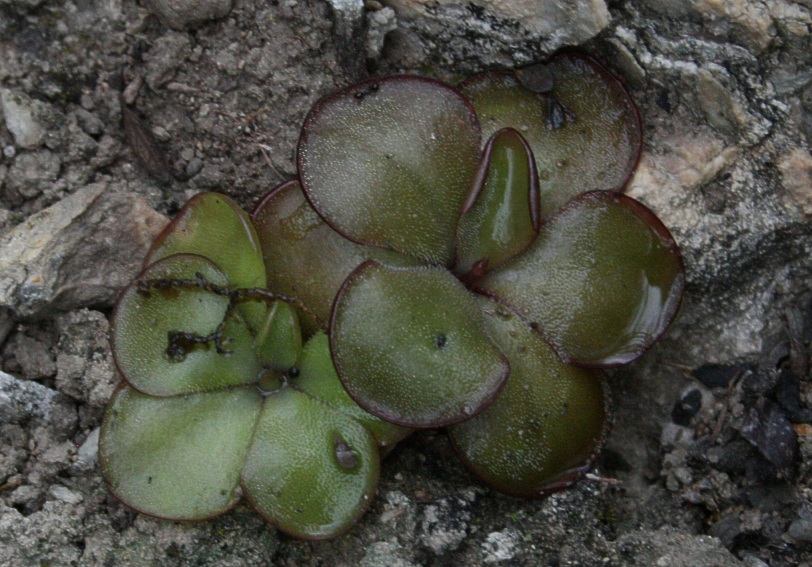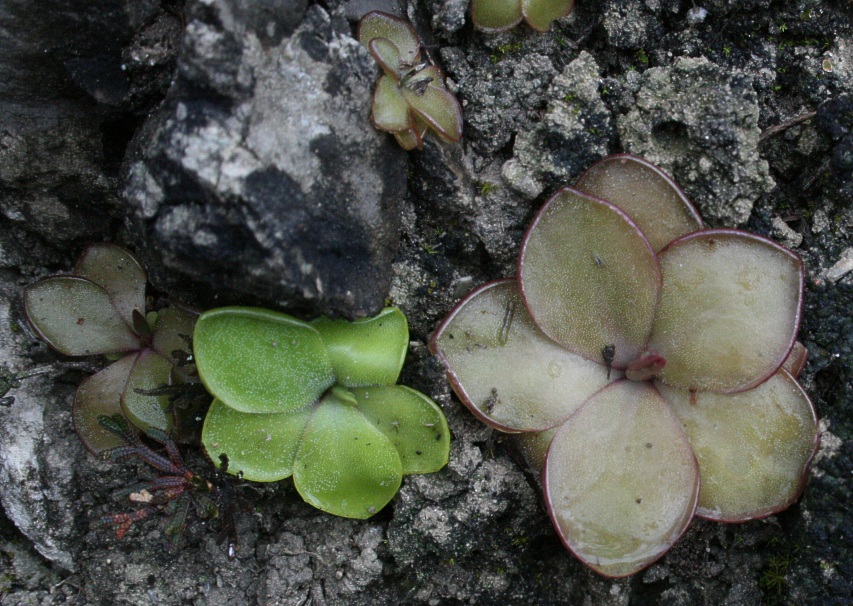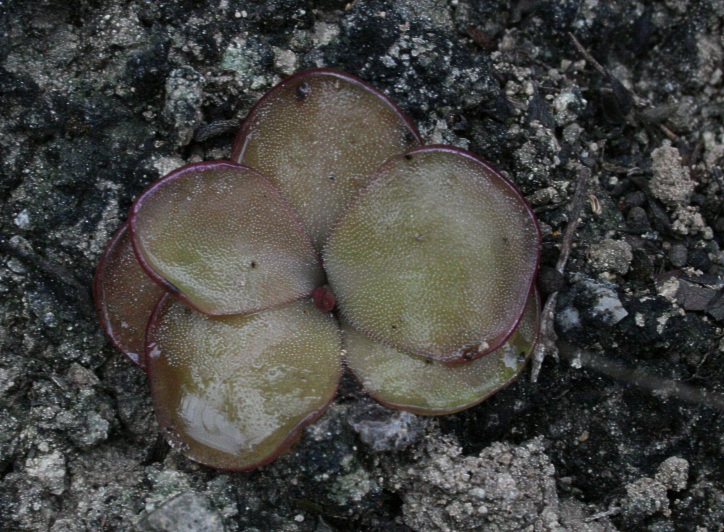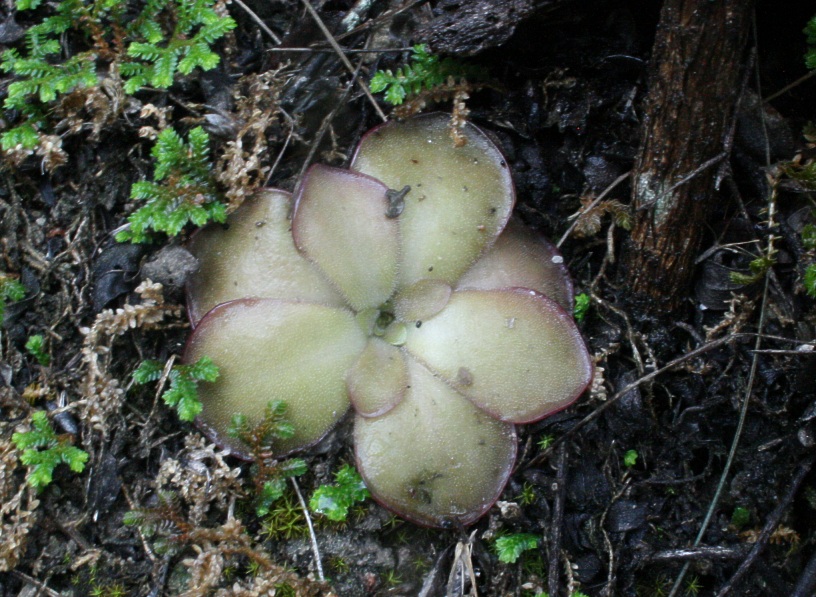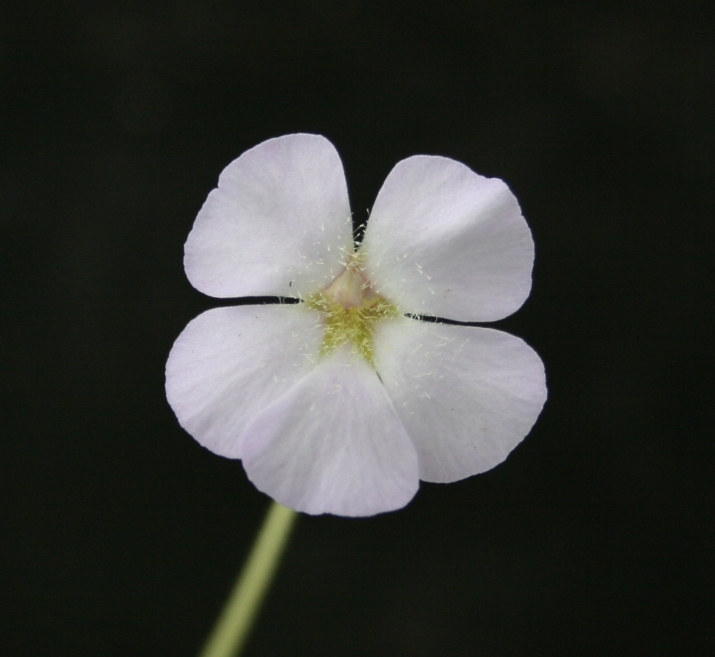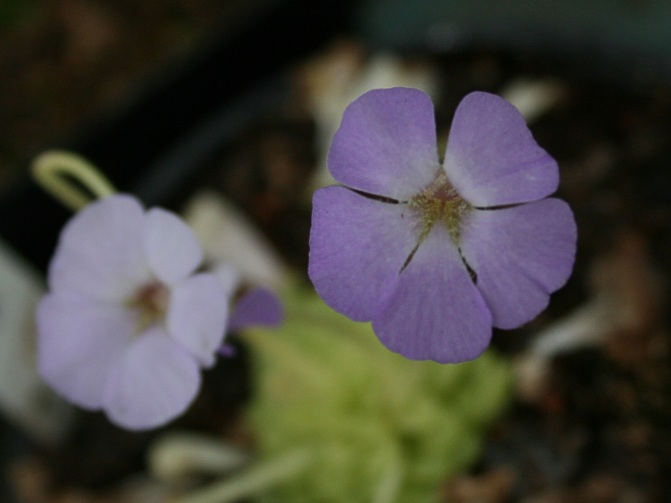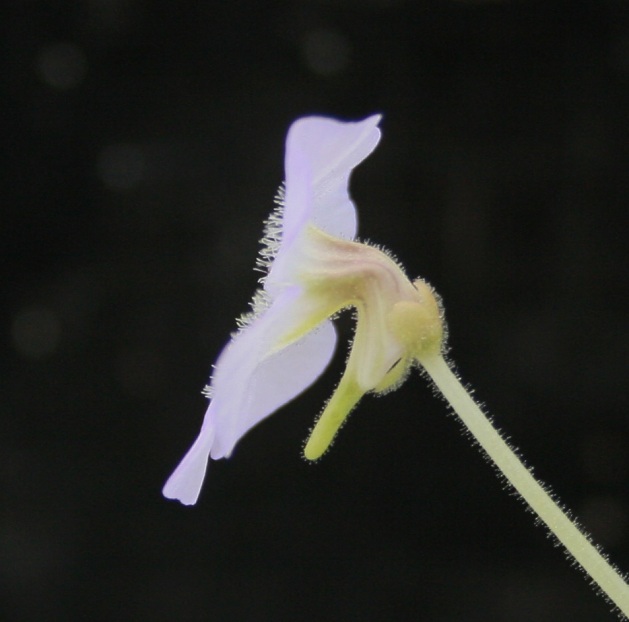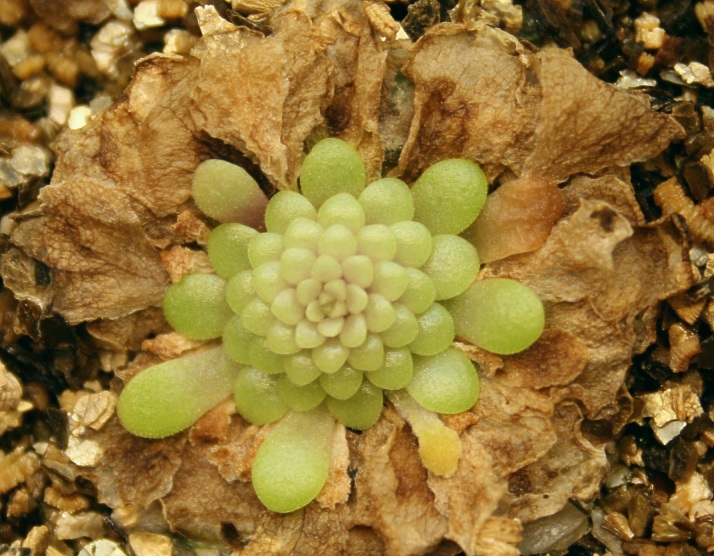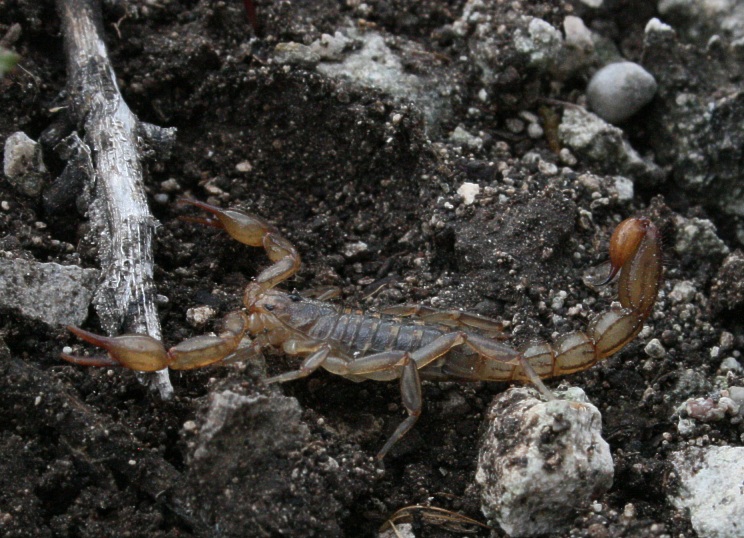
Oliver Gluch's World of Carnivorous Plants or: "What you always wanted to know about butterworts" |
| Impressum |

| Home | Origin | Prey | Species | Plant Purchase | Other Carnivorous Plants | Info about Carnivorous Plants | About me |
Pinguicula mirandae Zamudio & Salinas (1996)P.
mirandae was discovered for the first time in
the 1990s during a scientific evaluation of the
flora and fauna of the Biosphere
Reserve Tehuacán-Cuicatlán Valley and described
officially in 1996 as a new species. With the current
knowledge the species seems to be restricted to a small
area in the mountains of the Tehuacán-Cuicatlán valley
located in the Mexican state of Oaxaca
(south of the border to the state of Puebla).
P. mirandae grows in altitudes between 1250 and
1800 m a.s.l. in a tropical deciduous forest (span.:
selva
baja caducifolia)
that mainly consists of thorny low trees and
shrubs, bearing leaves in summer during the rainy
season but shed the leaves during the dry winter season.
Predominent plant genus are Agave, Dasylirion,
Nolina, Beaucarnea und Yucca.
P. mirandae mostly grows under shrubs (often together with Selaginella sp.) in little eroded calcareous soils or can be found in crevices of calcareous rocks in moist areas of west or northwest facing hills. Adapted
to
the environmental conditions, P. mirandae
does form in the wet summer months summer rosettes,
that consist of 6 to 10 carnivorous summer leaves. These
summer leaves can reach a length of up to 4 cm. The
colour of the oblong leaves can vary between light green
and pale red-brown. End of September the plants begin to
form the winter rosette. This compact rosette
(consisting of 40-60 leaves) has smaller succulent,
non carnivorous, 1 to 2 cm long leaves, with which the
plants survive the dry winter months.
The flowers do appear out of the winter rosette in
December and January. The corolla consists of 5 lobes,
almost equal in size, 3,5 to 7 mm long and 3 to 6,5
mm wide.The obovate corolla lobes change the colour
during aging of the flower, first the colour is white to
pale violet, then the colour intensifies towards a
darker violet. The upper part of the corolla lobes is
densely covered with white hair. Another specific
character of the flower is the funnel shaped tube, that
is bent in the middle forming a 90 degree angle, very
similar to the corolla tube of P. acuminata. The spur is
short (2-4 mm) and obtuse and separated from the tube.
Cultivation
of
P. mirandae is relatively easy. From spring to
autumn cultivation in moist to wet substrate is
preferable, while during the winter months the substrate
should be kept moist to dry. The pH of the substrate
does not seem to have any impact on a successful
cultivation. From experience I would not recommend a
substrate that contains a high amount of organic matter,
this may result in root rotting over winter. The use of
a soil with good draining properties and a good aeration
of the roots showed with me the best results.
|
